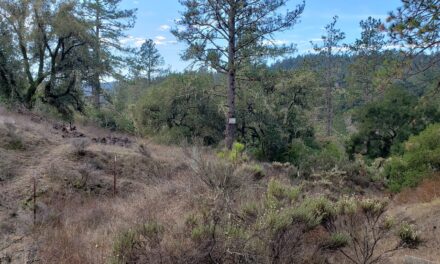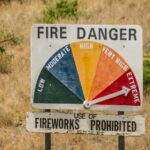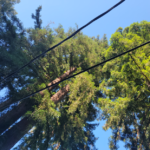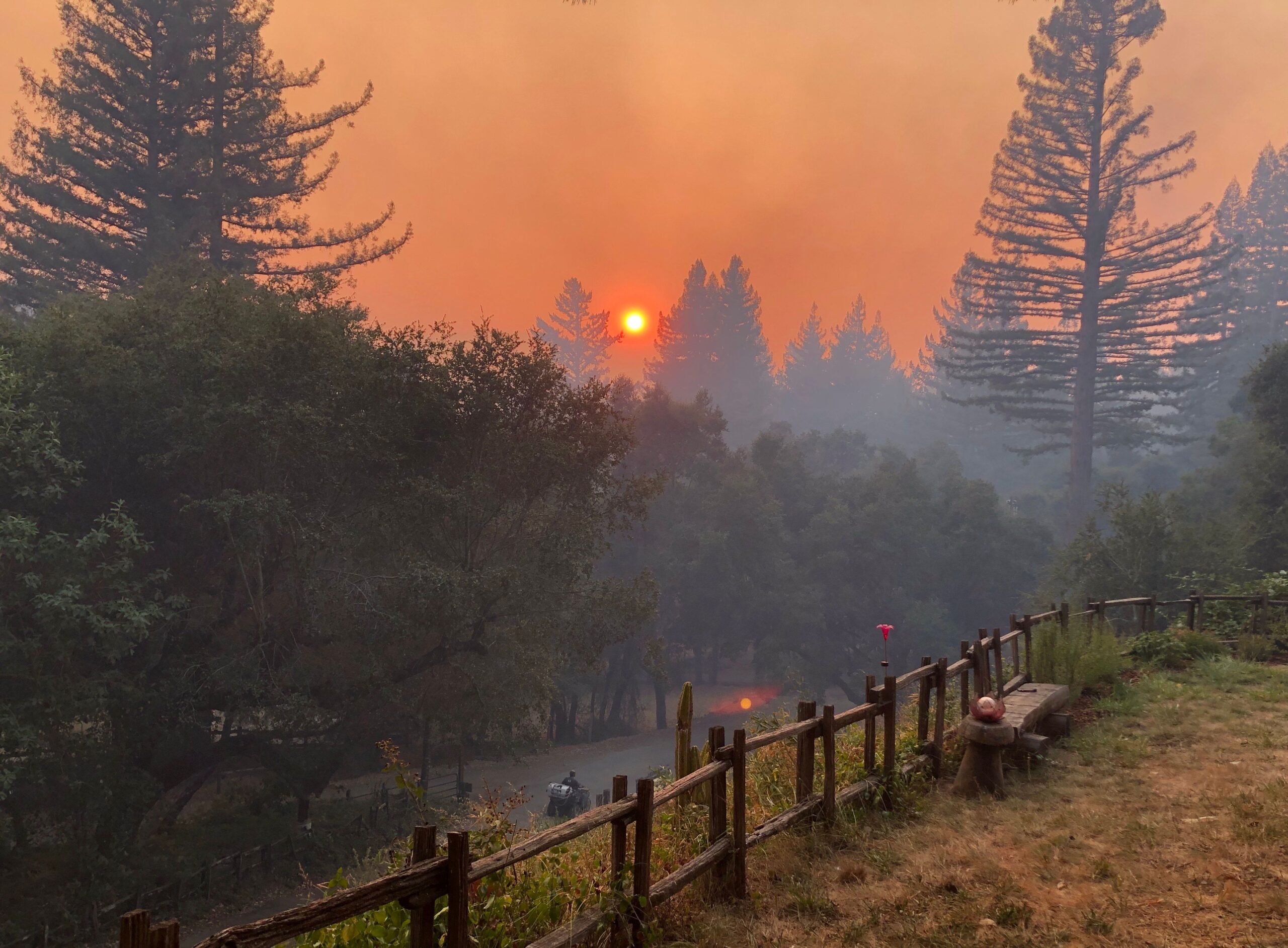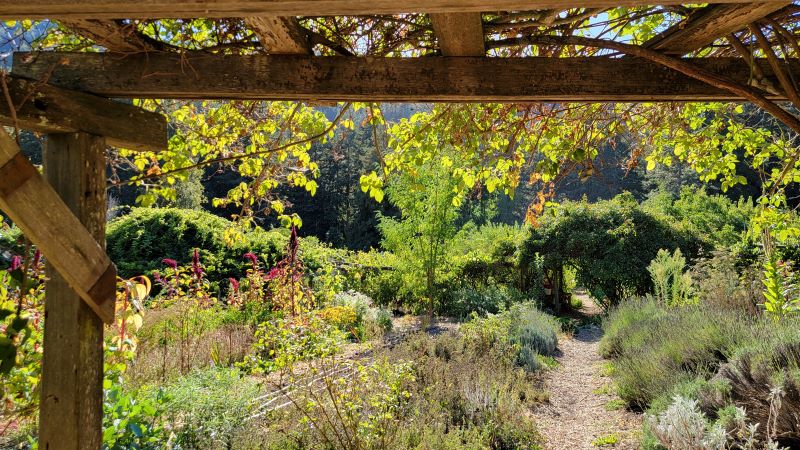
The Equestrian Way: Canham Farm Horse Rescue and Rehab Offers Sanctuary
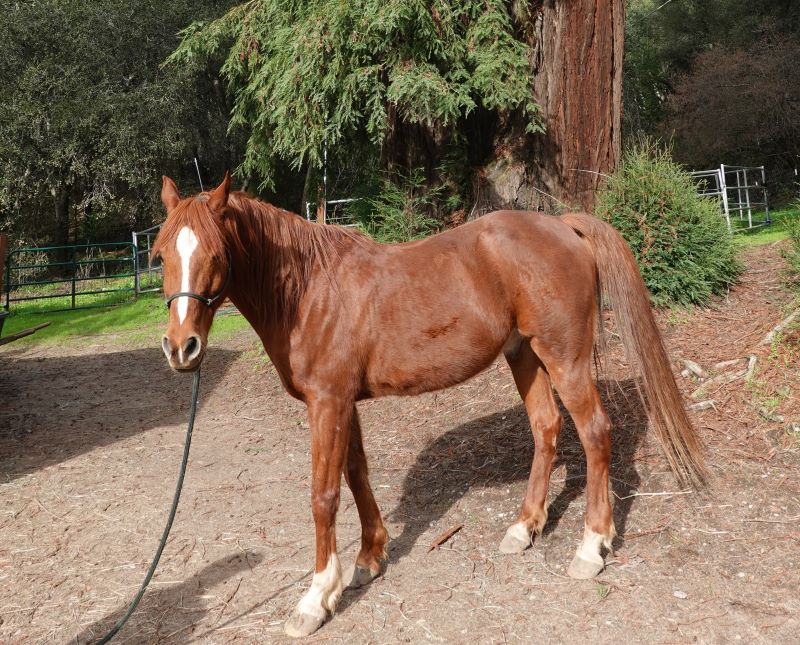
By Julie Horner
The horse is a symbol of the American West, ingrained in our imagination by fiction writer Louis L’Amour, TV’s Bonanza and Gunsmoke, and generations of Hollywood cowboys galloping off into the sunset. The Santa Cruz Mountains could still be considered the Wild West with its miles of forested trails, where each village in the valley is an outpost, and where you can still find steel tethering rings embedded in the sidewalks lining Boulder Creek’s historic main street and horses tethered to hitching posts at Monty’s in Felton. To those who ride and keep their mounts at local stables — Quail Hollow Ranch, Covered Bridge, Zayante Creek, and others — the equestrian way is a treasured element of our unique mountain culture.
Located in the rolling hills near Glenwood Open Space Preserve in Scotts Valley, down the country road apiece from where Alfred Hitchcock settled in the 1940s, Canham Farm Horse Rescue and Rehabilitation is a haven for abused and neglected domestic horses and wild mustangs rounded up from the range. Retired RN and longtime rider Julia Hyde owns the acreage and fully equipped stables. She started rescuing horses in 2017. “Sunset,” an American Saddlebred/Arabian cross with a chestnut coat, was her first. Sunset’s owner had been unable to care for him; he was underfed and hadn’t been groomed. Once at Canham Rescue, he grew shiny and strong and has become a beloved source of amusement. Malia Valentine, a Santa Cruz resident who has been volunteering at Canham for the last five years said, “He’s really a character. He loves attention. He’ll play little horse jokes like turning the lights on, or untying himself, or knocking someone’s hat off. He’s very very good natured and very playful.”

Rescuing Sunset inspired Julia to turn her passion into a 501(c)3 Charity Organization to acquire unwanted and abused horses and provide dedicated healing and training to prepare the animals for eventual adoption to rigorously vetted forever homes. Canham Horse Rescue can accommodate nearly a dozen horses, but for the sake of the animals, Julia and her team are comfortable working with six at a time. The animals are trained to accept their caregivers in a calm and consistent environment that builds mutual trust and respect. Julia said, “Horses live in the present. Every minute of the day is new, so they learn by repetition, not a crop.” The team will get them used to the halter, and being led and groomed and having their hooves maintained and their stalls cleaned. They put a lot of effort into training the horses to be rideable. Malia said that horses can live to be 25 or 30, depending on the breed and how well they’ve been cared for. Most of the horses stay at Canham Farm anywhere from a few months to a number of years. “It really depends on what the horse needs and who is interested in adopting them, if it’s the right match,” Malia said.

The horses find their way to Canham Rescue from all over California, Nevada, and Arizona. ZiZi, a petite 12-year-old Connemara Bay mare, was confiscated by Animal Control from a ranch in San Martin where she was neglected and abused. ZiZi is adoptable but for now is filling a role as a calming presence for new arrivals and for training new volunteers. She has also been an asset in Canham’s ‘Horses Helping Humans’ program, which brings people dealing with difficult circumstances, seniors, and troubled youth together with a horse’s therapeutic nature. Julia said that horses can hear your heartbeat. “That’s why they’re so good with therapy, they can read people so easily.”
Serif, a 16-year-old mare, is an owner-surrender who came to Canham just a few months ago. Because her teeth were not maintained, she now has to eat a special diet. “She came in looking like she was in a lot of pain,” Malia said. “You can really see it in their eyes, they come in looking really detached, like they’re suffering.” After some chiropractic sessions and an updated meal regimen, Malia said Serif’s eyes have brightened and she moves more easily.
Farewell Freedom
Untouched by human hands, mustangs Ruby and Cleo, both mares, were rounded up and captured by the United States Forest Service in the Devil’s Garden Plateau Wild Horse Territory in Modoc County, near Alturas, and were at risk of being transported for slaughter. Both arrived at Canham pregnant, and the colts have since been adopted out. The mares are mild mannered and are making strides in the arena adjusting to domestic life. Jamal, a wild foal who was captured by the U.S. Forest Service in Arizona, has accepted his halter and is getting used to human companionship and his new routine. Julia believes he was separated from his mother while still being weaned. “We do a lot of advocacy work for the protection of wild horses and to stop the roundups,” Malia said. They would rather the horses stay free.
In 1971, President Richard M. Nixon signed into law the “Wild Free-Roaming Horses and Burros Act,” which recognizes wild herds as “living symbols of the historic and pioneer spirit of the West.” The Bureau of Land Management (BLM) was then charged with protecting the animals from “capture, branding, harassment, and death.” As of the summer of 2023, the Journal of Wildlife Management estimated that there are over 225,000 wild horses and burros in the U.S. Most are located on BLM public lands in the West, approximately 26.9 million acres across 10 states, according to the BLM ‘Wild Horse and Burro Program’ website (blm.gov/whb). These wild horses and burros are now at odds with the cattle industry, Big Ag, and the oil companies. Some say that out-of-control populations of feral animals trample rangeland and disrupt riparian habitat. Large herds also deplete available feeding options, risking death by starvation. The BLM reports that it is currently studying emerging herd management techniques like contraception through vaccination. Julia suggests reading the book Wild Horse Country: The History, Myth, and Future of the Mustang, America’s Horse by David Philipps. The American Wild Horse Campaign website has additional information: americanwildhorsecampaign.org
Canham Farm Horse Rescue and Rehabilitation will be on hand at the 24th Annual Brookdale Bluegrass Festival over the weekend of March 15-17, 2024. Julia is bringing Sera (short for Serendipity), a 22-year-old half Arabian blood Bay with a distinctive reddish brown color. A portion of the proceeds from the bluegrass festival go to Canham’s ongoing efforts to rescue domestic and wild horses. “I do it for the horses,” Julia said. “This country wouldn’t be as it is now if it weren’t for horses. They built the railroads. They’ve given so much and should be taken care of.” canhamfarm.com | Text: (831) 588-5198
Tickets to the Brookdale Bluegrass Festival: bit.ly/BrookdaleBluegrassFestival2024
Julie Horner writes about art, music, and the local business scene in the Santa Cruz Mountains. Email: julie@slvpost.com
Featured photo by Julie Horner
***
Have news or stories to share? The San Lorenzo Valley Post welcomes your Santa Cruz Mountains news, story ideas, photos, and letters. Send us an email.
Sign up for our newsletter to stay connected to news and events in the Santa Cruz Mountains.

